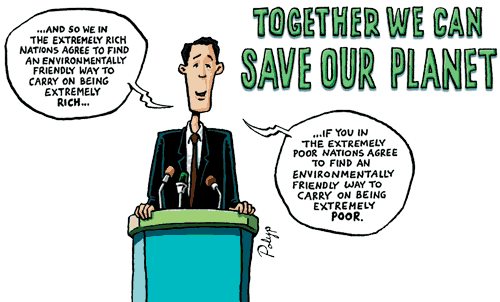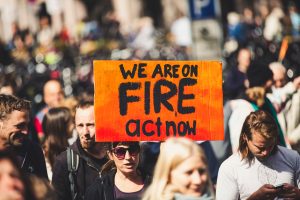8 False Solutions Vs. Real Solutions
Yixin Zhang
As global warming worsens, tons of possible solutions have been proposed to cool down our planet and building a greener and more sustainable ecosphere, but not all of them are real solutions. Real solutions should be those contribute to the problem from the origin like reducing carbon emissions, increasing energy efficiency and using more alternative energy while maintaining economic growth, social justice and rising standard of life. However, organizations have proposed multiple solutions that do not address the root causes of climate change but have the potential to worsen the crisis, which can be defined as false solutions (Wildfire). And one of the most relatable of them all is displacement.
- II. Displacement
But why displacement? For one, the issue of displacement/gentrification is easily diminished by other long-standing social justices, and when it comes to city-planning, it is not unusual to witness that government, consultants, and private developers are often in predominant roles of such project. A planning process or development project designed and driven solely by the community members who live there is actually rarity. With the goal of dealing with climate change, it is vital for us to face our visceral fear of shattering wrongful approach towards the issue. In this case, displacement project led by interests-seekers is the wrongful approach. For another, one critical step in resolving climate crisis is to abridge the climate gap (Link to Disproportionate Impact of Climate Change), the disproportionate and unequal impact that climate crisis wreaked to people of color living in more polluted areas and the poor, and evidently, displacement is increasing that gap within local communities, here, in the city of Seattle. According to a survey conducted by Got Green and Puget Sound Sage (two environment justice organizations based in Seattle dedicated themselves to ensuring equitable benefits of green economy), one third of the survey respondents identified the lack of affordable housing as the most concerned issue impacting their neighborhood (Link to Affordable Housing and Transportation). Thus, it is palpable to extrapolate that displacement is simply not the panacea for for addressing the climate gap and reducing the emission of greenhouse gases instead this measurement exacerbates those obstinate problems. Ideally, the houses in the city are being refurbished by developers to create our ideal green communities to lower the greenhouse gas emissions. Notwithstanding, refurbishment leads to the spike of housing prices and forces community members who cannot affordable these “green communities” to leave the places they called home since their childhood. To make things worse, the neighborhoods they were displaced are nowhere near convenient public transportation. Consequently, the lack of accessible public transit again forces them to drive the older and polluting vehicles they own to commute. And driving from these households significantly impacts greenhouse gas emissions reduction (Got Green Puget Sound Sage).
- III. Pros VS Cons
Here is a brief summary of some of the most noticeable benefits and drawbacks of displacement:
- Pros:
-
- Mitigating the blight and population loss suffered by urban core
- Revamping city neighborhoods
- Overhauling city infrastructure and amenities
- Cons:
-
- Rise in property values and rents
- Original residents, poorer and often people of color, are being pushed out of the neighborhoods
- Increase in greenhouse gas emissions
- Enlarging the climate gap
- Undermining racial justices
- IV. Remedies to displacement
-
Fighting for the new upcoming displacement and affordable housing crisis is part of a large effort to fight against climate change, therefore real solutions to help citizens live sustainably are required. Government could start building affordable housing in green community instead of leaving it mostly to private developers through tax credits and regulate rules and laws to prevent rising house prices by those building developers who want to make excessive profits from it (Eligon). At the same time, Climate change organizations could collect social funds to support those original residents who fall under certain income levels and are facing crisis of displacement and allocate this money to support those under-resourced area. Additionally, Social enterprises could start project to improve infrastructures including public parks and transportation line in communities. Infrastructures have to be upgraded not only for the reduction of greenhouse gases emissions but also to abridge the climate gap. In the end, Individuals could participate more actively in specific affordable housing development through municipal bond elections distributed by local government and take actions on low-carbon life (Sukumaran).
- V. Other False Solutions VS Real Solutions

a) Other false solutions:
- Carbon offsets that cannot deliver permanent emissions reductions and could be used to condone emissions elsewhere.
- Cap and trade that devised by corporates and empowered these corporations to pollute somewhere else in order to maximize short-term profits. (Link to Cap and Trade and Carbon Offsets)
- Cloud seeding that controlled by the government.
- Genetically modified, climate-resistant crop seeds that only produce for one generation.
- Replacing all of our internal combustion engine(ICE) cars by their electric counterparts.(Wildfire)
- Solar radiation management and that shows no effect on the reduction of greenhouse gas levels but has significant impact on the solar panels’ efficiency and photosynthesis. (Wildfire)
b) Real solutions:
- Worker owned cooperatives that were built for solidarity economy.
- Collective housing that is permanently affordable and effectively stops gentrification. (Link to Affordable Housing and Transportation)
- Sustainable farms that actually make self-sufficiency for urban growers possible.
- Green architecture. (Link to Green Architecture and LEED Certification)
- Constructing livelihoods close to where people live, close enough to walk, bike, or take public transportation.
- Gradually phasing out the burning of fossil fuels and replacing them with solar panels, windmills, and hydro turbines
- VI. Peroration
Envisage a future where one day both the existing community and new members could all benefit from the vision designed by grassroots from all across the neighborhoods, by people who care. Unfortunately, for too many people for too long, we have failed to live up to this ideal. In light of the grim status quo, our planet is teetering on the brink of the abyss of the sixth mass extinction, the onus is on us to not only shed lights on the false solutions to meliorate our fragile ecosphere, but more importantly, view the world with our limpid eyes and our conscience to seek for the real solutions that come with profound transformations.
Media Attributions
- pexels-markus-spiske-2990642 © Markus Spiske is licensed under a CC BY-NC (Attribution NonCommercial) license
- Together We Save Our Planet © Climate Justice Taranaki is licensed under a All Rights Reserved license


